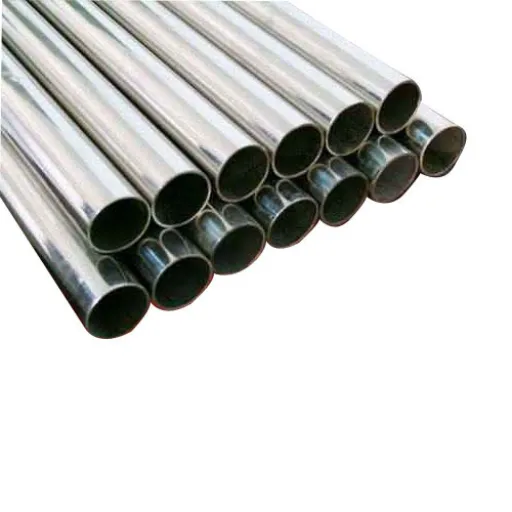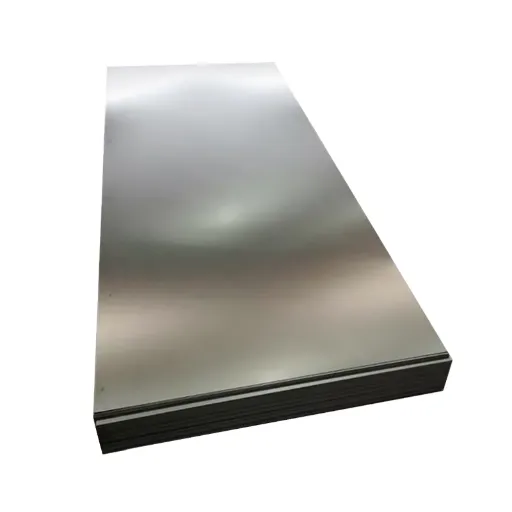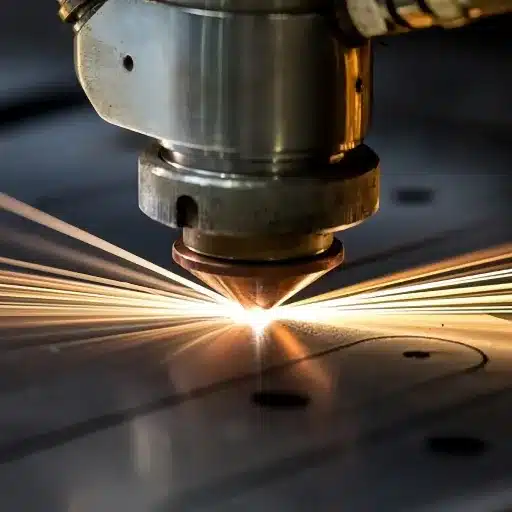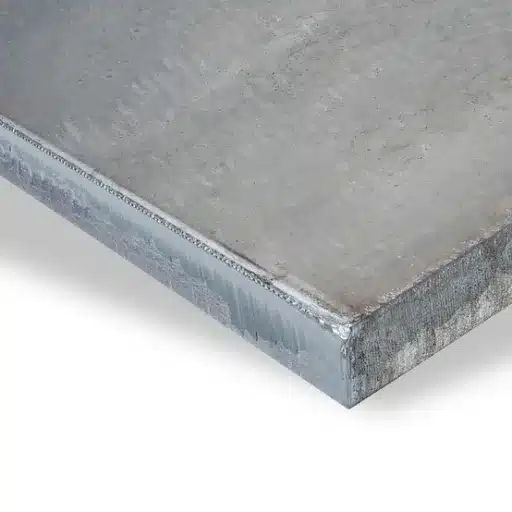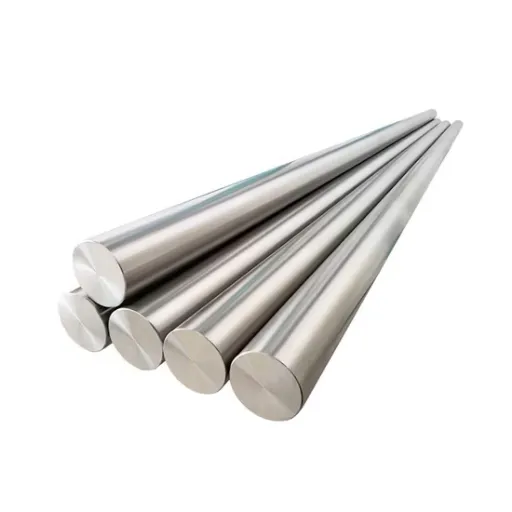AISI 4130 alloy steel is exceptional when it comes to versatility and reliability, which few other materials can match. The metal has been widely used for its exceptional strength, durability, and versatility in applications from aerospace and automotive to construction and energy. However, AISI 4130’s characteristics and exceptional performance are not that easily determined. This guide provides an in-depth view of AISI 4130 alloy steel by examining its main features, uses, and uniqueness that will help you see why it is a great material. It does not matter if you are a producer, an engineer, or just an alloy enthusiast, this article will provide the information necessary to comprehend the full potential of AISI 4130.
Introduction to 4130 Alloy Steel

Composition of 4130 Alloy
The use of AISI 4130 alloy steel, commonly referred to as “Chromoly” given the presence of chromium and molybdenum, is basically the result of a very well-composed alloy of elements that are responsible for its famous performance characteristics. The following is the chemical make-up of the alloy 4130:
Carbon (C): 0.28% – 0.33%
Carbon not only contributes to the hardness and tensile strength but also keeps the ductility at a moderate level.
Chromium (Cr): 0.80% – 1.10%
Chromium has a positive effect on wear and corrosion resistance and also helps in the production of stable carbides.
Molybdenum (Mo): 0.15% – 0.25%
Molybdenum gives the steel higher tensile strength, better hardenability, and more resistance to softening during heat treatments.
Manganese (Mn): 0.40% – 0.60%
Manganese makes the steel stronger and more durable and at the same time; it enhances the hot working characteristics.
Silicon (Si): 0.15% – 0.35%
Silicon not only assists in deoxidizing the alloy but also slightly increases its strength.
Sulfur (S) and Phosphorus (P): ≤ 0.035% (maximum)
The content of both elements is reduced to the lowest possible level in order to improve the alloy’s toughness and compatibility for welding.
Iron (Fe): Balance
Iron is the main base material in the alloy, and it is responsible for its strength.
General Uses of 4130 Steel
Aerospace Industry
4130 steel is frequently selected in the aerospace industry for its remarkable strength-to-weight ratio and high toughness the main application being components like landing gear, airframes, and engine mounts. These parts actually have to endure very heavy loads while still being as light as possible, so using 4130 is just perfect solution. Moreover, 4130’s weldability enables the more efficient creation of even the most intricate aerospace structures.
Automotive Industry
4130 steel is often used for the making of roll cages, chassis, and high-performance engine parts. Its tensile strength and wear resistance are the two main reasons why it gives safety and durability in high-demand applications like motorsports. Besides, easy to machine which allows for shorter production time and cheaper costs.
Oil and Gas Industry
4130 steel has been the consistent choice for the oil and gas industry when it comes to producing drill bits, pipelines, and fittings among other things. Its resistance to fatigue, tolerance to high pressure and reliability in aggressive environments are some of the reasons that it is preferred in these applications.
Construction and Infrastructure
4130 steel is used in building heavy machinery, bridges, and support beams where high strength, toughness, and impact resistance are the principal concerns. The steel’s property of not losing its quality even under stress translates to longer and more reliable life for these structures.
Key Properties of 4130 Steel

Chemical Composition of AISI 4130 Steel
Carbon (C): 0.28%–0.33%
The steel’s carbon content gives strength and hardness to the overall metal. The range of carbon content is so finely adjusted that it guarantees an amazing combination of toughness and machinability.
Chromium (Cr): 0.80%–1.10%
Chromium is responsible for the steel’s corrosion resistance, strength retention when the steel is at high temperature, and improved wear resistance.
Molybdenum (Mo): 0.15%–0.25%
Molybdenum is responsible for improving the steel’s toughness, strength, and hardenability, particularly during the process of heat treatment.
Manganese (Mn): 0.40%–0.60%
Manganese is added to steel to enhance its hardenability and wear resistance, and also to act as a deoxidizer in the course of the steel’s production.
Silicon (Si): 0.15%–0.35%
Silicon provides more strength and hardness, particularly in heat-treated scenarios, and at the same time, it also protects the steel against oxidation.
Phosphorus (P): Maximum 0.035%
Phosphorus is limited to a very small quantity so that it does not make the steel brittle and the steel maintains its ductility.
Sulfur (S): Maximum 0.040%
Sulfur content is strictly controlled so that hot shortness does not occur and that the alloy retains its overall toughness.
Mechanical Properties of AISI 4130 Steel
Tensile Strength: The tensile strength of the 4130 steel alloy varies considerably from 560 MPa (81.2 ksi) to 980 MPa (142.1 ksi), with the exact value depending on the type of heat treatment applied to the alloy. Hence, the high strength of the alloy allows it to bear enormous loads without changing its shape.
Yield Strength: The yield strength of 4130 steel is mainly in the area of 460-635 MPa (66.7-92.1 ksi), which is still a good figure as the yield point signifies that the material will not return to its original shape even when the stress is removed.
Elongation at Break: The elongation at break can be in the range of 21-25% prevailing on the type of heat treatment and the process involved. This characteristic of the steel reflects the property of deforming plastically before breaking, hence excellent ductility.
Hardness: The Brinell Hardness Number (BHN) can vary from 150 to 217 HB depending on the heat treatment condition. It can also be case-hardened for applications that require the surface to be highly resistant to wear.
Impact Toughness: The material is tough to a large extent, particularly when it has undergone normalization or annealing treatment, thus it is able to resist cracking when subjected to dynamic or impact loads.
Weldability and Heat Treatment of 4130 Steel

Welding Techniques for 4130 Alloy
Pre-Weld Preparation
One of the biggest factors that lead to welding defects is poor preparation. It is important to ensure that the surfaces to be welded are free from all contaminants, such as grease, dirt, or oxide layers, which may prevent a strong bond from forming. A small bevel on the thicker sections may also assist in achieving the correct welding penetration.
Welding Method
4130 steel can be joined by means of two principal methods: GTAW/TIG and GMAW/MIG. The primary advantages of these techniques are that they facilitate control over heat input and provide great precision. On the other hand, in the case of thicker sections, MIG welding will allow to work faster because it has higher deposition rates.
Preheating and Interpass Temperatures
The foregoing is the reason for the necessity of preheating. In most cases, the range of preheating for 4130 steel is between 150°F and 400°F (65°C and 200°C). Depending on the thickness, the material needs to be preheated less or more. It is absolutely critical to control interpass temperature at about 400°F (200°C) during multi-pass welding with the aim of lowering residual stresses and preventing thermal shock.
Heat Treatment Processes
Annealing
The purpose of annealing is to increase the ductility and machinability of AISI 4130 steel. The process consists of heating the steel up to 1550°F (843°C) and then slowly cooling the metal in a furnace. The steel is allowed to relieve internal stresses and refine its microstructure, thereby getting improved workability during the slow cooling process.
Normalizing
Normalizing is a method that aims to both improve mechanical properties and create a more uniform grain structure. Usually, the material is heated to a temperature of 1600°F (870°C) to 1700°F (927°C) and then air-cooled. This process changes the grain size and increases the toughness, making the steel more resistant to breaking during exertion of dynamic loads.
Quenching
Quenching is a hardening method that involves rapid cooling of steel after heating it to a temperature of 1550°F-1600°F (843°C-871°C). Oil, water, or polymer-based solutions are usually employed as quenching media. The rapid cooling changes the microstructure to martensite, which results in the material having a combination of high strength and hardness with the downside of increased brittleness.
Applications of 4130 Steel in Various Industries
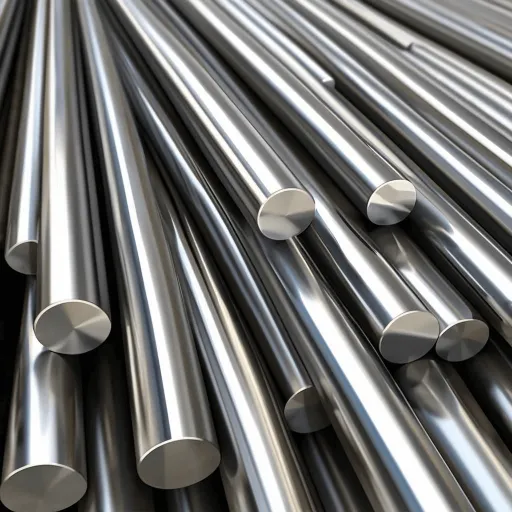
Use in the Automotive Industry
The automotive industry relies heavily on AISI 4130 steel, and it is because of its splendid combination of characteristics like strength, toughness, and weldability. The automotive sector employs this low-alloy material with a high content of chromium and molybdenum to make parts that will endure high stress, yet remain durable. Its extraordinary properties permit use in vital areas like roll cages, chassis, suspension parts, and drive shafts.
The reports in the industry indicate that AISI 4130 steel is being adopted more and more by the global automobile manufacturers since they are trying to get better safety at cheaper prices and to lessen weight as the main cost factor for better fuel efficiency. A reliable and less heavy 4130 steel tube cage is a commonplace element for drivers in case of an accident, especially in the motorsport world, where it grants that all-around protection. Apart from this, the steel has also earned its reputation as a material of choice for heavy-duty trucks and off-road vehicles because of its ability to absorb impacts as well as support high loads.
Applications in Aerospace Sector
AISI 4130 steel is a major player in the aviation industry due mainly to its remarkable strength-to-weight ratio, resistance to corrosion, and superb machinability. This ductile alloy has no problem getting onto the list of manufacturing processes for aircraft fuselages, landing gears, and engine mounts. Toughness and durability delivered by a mix of low carbon and chromium plus molybdenum make the steel perfect for life under the most grueling demands of the aerospace industry.
One of the major selling points of AISI 4130 steel in aerospace is its ability to withstand high temperatures and still perform well, which is one of the major requirements for components used in engines and high-stress areas. According to industry trends, the tensile strength of AISI 4130 ranges from 85,000 psi to 110,000 psi depending on the heat treatment; hence it is the best choice for applications where structural integrity is needed without excessive weight penalties.
Recent Innovations in 4130 Alloy Steel

Advancements in Manufacturing Techniques for 4130 Steel
Heat Treatment Improvements
The introduction of new vacuum heat treatment and controlled atmosphere furnaces have one side that offers the consistency of mechanical properties, while on the other side, they manage to reduce oxidation and contamination. A good example of these methods is the ability to get the tensile strength of up to 970 MPa (140 ksi) together and giving ductility which is really a need for the aerospace and automotive industries.
Additive Manufacturing (3D Metal Printing)
The convergence of 3D metal printing has changed the game for 4130 steel throughout its initial stages in prototyping and custom part manufacturing. Advanced methods like Selective Laser Melting (SLM) can produce intricate shapes of parts with nearly no waste. Furthermore, the process saves time and provides up to 30% cheaper material costs.
Precision Forging and Machining
Precision forging supported by CAD and automated control systems guarantees the best grain flow and the highest fatigue resistance in the 4130 steel parts. Besides, high-speed machining and the use of cutting-edge tooling materials together contribute to the production efficiency and quality that are crucial for the applications in motorsports and oil & gas industries.
Innovative Applications of 4130 Steel
4130 steel, which is also referred to as chromoly steel, has become an essential material across various industries because of its great strength, low weight and wide range of applications. One sector where its use is very pronounced is aerospace and aviation, where its combination of high tensile strength, fatigue resistance, and extreme conditions handling make it suitable for critical components such as landing gear, structural parts and engine mounts. According to the latest industry reports, the aerospace materials market is likely to grow up to $37 billion by 2030, and the 4130 steel high-performance alloys will be among the major factors behind this growth.
The use of 4130 steel continues to be heavy in the motorsports sector, which is another cutting-edge application area. Its weight-to-strength ratio makes it a must-have material for producing roll cages, chassis, and suspension systems for race cars. The motorsport market is expected to grow over 10% annually in this decade, which will, in turn, increase the demand for materials like 4130 steel that provide better performance and safety at the same time.
Reference Sources
-
ThomasNet:
Article: All About 4130 Steel (Properties, Strength, and Uses)
This source offers a comprehensive overview of 4130 steel, including its properties, strength, and common applications. -
Arch City Steel & Alloy, Inc.:
Article: A Guide To 4130 Steel: Properties, Composition, And Uses
This guide discusses the composition, properties, and various industrial uses of 4130 steel, making it a valuable resource for understanding its applications. -
Advance Grinding Services:
Article: 4130 Alloy Steel
This source highlights the versatility, cost-effectiveness, and durability of 4130 steel, along with its advantages for manufacturers and construction companies.
Frequently Asked Questions (FAQs)
What are the mechanical properties of 4130 alloy steel?
4130 alloy steel is one of those materials that really impresses when it comes to mechanical properties. Most notably, it has high tensile strength and at the same time it is tough enough to hold up under stress. The yield strength of 4130 steel is usually in the range of 90 to 100 ksi and the tensile strength is 100-120 ksi. 4130 steel really shows its quality in the aspect of ductility, which makes it a good candidate for several structural applications.
What is the chemical composition of 4130 steel?
4130 steel is grouped among the low alloy steels and mainly consists of chromium and molybdenum, both of which are very effective at reinforcing. The average chemical makeup of the material is around 0.28-0.33% carbon, 0.80-1.10% manganese, 0.15-0.25% molybdenum, and 0.40-0.60% chromium. All these elements together perfect the steel’s mechanical properties and also its corrosion resistance.
What are the physical properties of 4130 alloy steel?
4130 alloy steel has a physical density of about 0.284 lb/in³ and a melting point of about 2,500°F. The thermal characteristics of steel are quite good and thus it can be used in applications where heat resistance is required. Its low coefficient of thermal expansion also helps in keeping the steel’s dimensions stable when the temperature fluctuates.
How does the weldability of 4130 steel compare to other alloy steels?
4130 steel is among the best welding steel due to its favorable weldability. The steel can be welded by conventional methods without any significant strength loss. However, it is recommended to preheat and post-weld heat treat the weld area in order to minimize cracking, especially in thicker sections of the steel.

